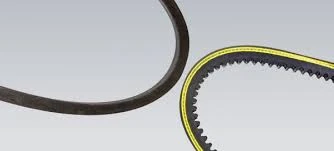- Arabic
- French
- Russian
- Spanish
- Portuguese
- Turkish
- Armenian
- English
- Albanian
- Amharic
- Azerbaijani
- Basque
- Belarusian
- Bengali
- Bosnian
- Bulgarian
- Catalan
- Cebuano
- Corsican
- Croatian
- Czech
- Danish
- Dutch
- Afrikaans
- Esperanto
- Estonian
- Finnish
- Frisian
- Galician
- Georgian
- German
- Greek
- Gujarati
- Haitian Creole
- hausa
- hawaiian
- Hebrew
- Hindi
- Miao
- Hungarian
- Icelandic
- igbo
- Indonesian
- irish
- Italian
- Japanese
- Javanese
- Kannada
- kazakh
- Khmer
- Rwandese
- Korean
- Kurdish
- Kyrgyz
- Lao
- Latin
- Latvian
- Lithuanian
- Luxembourgish
- Macedonian
- Malgashi
- Malay
- Malayalam
- Maltese
- Maori
- Marathi
- Mongolian
- Myanmar
- Nepali
- Norwegian
- Norwegian
- Occitan
- Pashto
- Persian
- Polish
- Punjabi
- Romanian
- Samoan
- Scottish Gaelic
- Serbian
- Sesotho
- Shona
- Sindhi
- Sinhala
- Slovak
- Slovenian
- Somali
- Sundanese
- Swahili
- Swedish
- Tagalog
- Tajik
- Tamil
- Tatar
- Telugu
- Thai
- Turkmen
- Ukrainian
- Urdu
- Uighur
- Uzbek
- Vietnamese
- Welsh
- Bantu
- Yiddish
- Yoruba
- Zulu
Ogo . 14, 2024 15:41 Back to list
An Overview of V-Ribbed Belts and Their Applications in Modern Automotive Systems
The Importance of V-Ribbed Belts in Automotive Applications
V-ribbed belts, also known as serpentine belts or multi-ribbed belts, are a critical component in modern automotive engines. These belts play a fundamental role in driving multiple peripheral devices, including the alternator, power steering pump, water pump, and air conditioning compressor. Their design and functionality are crucial for the efficient operation and performance of a vehicle.
Design and Construction
V-ribbed belts are made from a durable rubber compound reinforced with polyester or other materials to enhance their strength and flexibility. The distinctive ribbed design increases the surface area in contact with the pulleys, providing better grip and reducing slippage. This design allows the belt to operate under high tension while accommodating fluctuations in engine speed and load, ultimately leading to improved efficiency.
The “V” shape of the ribs enables the belt to maintain better alignment and provides a self-centering mechanism, which minimizes the chances of misalignment and wear. Moreover, the flat back surface allows for smooth running against the pulleys, further enhancing performance and reducing noise during operation.
Advantages
One of the significant advantages of v-ribbed belts is their ability to drive multiple accessories with a single belt. This not only simplifies engine design but also reduces weight compared to older systems that required several separate belts. The compact nature of v-ribbed belts contributes to better engine packaging, allowing for more efficient use of space in the engine compartment.
v-ribbed belts

V-ribbed belts are known for their longevity and robustness. Manufacturers have engineered these belts to withstand varying temperatures and conditions, making them suitable for diverse environments. With proper maintenance, a v-ribbed belt can last anywhere from 50,000 to 100,000 miles, depending on usage and driving conditions.
Another benefit of v-ribbed belts is their ease of replacement. Unlike traditional belts that may require significant disassembly for access, v-ribbed belts can often be replaced without extensive effort. This feature makes maintenance tasks more accessible to both professional mechanics and DIY enthusiasts.
Maintenance and Replacement
While v-ribbed belts are designed for durability, they are not immune to wear and tear. Regular inspections are necessary to ensure that belts do not exhibit signs of cracking, fraying, or glazing. Such deterioration can lead to belt failure, resulting in the loss of power to essential engine components.
Signs that a v-ribbed belt needs replacement include unusual noises during engine operation, such as squeaking or chirping, as well as visible signs of damage. It is advisable to replace the belt according to the manufacturer’s recommendations or whenever there are signs of wear.
Conclusion
In conclusion, v-ribbed belts are an integral part of automotive engineering, providing the essential function of driving various engine accessories smoothly and efficiently. Their advanced design, coupled with their advantages over traditional belts, makes them a preferred choice for modern vehicles. Regular maintenance and timely replacement are key to ensuring their optimal performance and prolonging the life of the engine's components. As automotive technology continues to evolve, the importance of v-ribbed belts in maintaining vehicle reliability and performance cannot be overstated.
-
Korean Auto Parts Timing Belt 24312-37500 For Hyundai/Kia
NewsMar.07,2025
-
7PK2300 90916-T2024 RIBBED BELT POLY V BELT PK BELT
NewsMar.07,2025
-
Chinese Auto Belt Factory 310-2M-22 For BMW/Mercedes-Benz
NewsMar.07,2025
-
Chinese Auto Belt Factory 310-2M-22 For BMW/Mercedes-Benz
NewsMar.07,2025
-
90916-02660 PK Belt 6PK1680 For Toyota
NewsMar.07,2025
-
drive belt serpentine belt
NewsMar.07,2025

